Top Tier CPU Air Coolers Q3 2015: 9-Way Roundup Review
by E. Fylladitakis on July 6, 2015 8:00 AM ESTThe Thermalright Macho Zero
Being one of the oldest and most reputable manufacturers of advanced cooling solutions, Thermalright does not really need much of an introduction in such a review. Ever since 2001, Thermalright is totally focused on designing and producing cooling solutions for PC components, with the mere exception of a heatsink for the XBOX 360. The company greatly surprised us with their submission for this review. With this being a roundup review of top performance coolers, almost anyone would expect to see the Silverarrow or HR-22 (or a Copper TRUE? - Ian). However, Thermalright submitted the Macho Zero - a cooler optimized for passive performance and low airflow environments!
Thermalright supplies the Macho Zero in a very plain black cardboard box, with just a schematic of the cooler printed on it. Inside the box, the cooler is very well protected inside thick polyethylene foam pieces. Note that the Macho Zero is not supplied with a fan. For the means of this review, Thermalright supplied us with a single TY-147A 140 mm fan.
The bundle of the Macho Zero is the most thorough of this review. Thermalright nickel-plated the screws and retention plates necessary for the mounting of the cooler, supplies a tube of quality "Chill Factor III" thermal paste, anti-vibration rubber pads and wire clips for one cooling fan, provides a full size magnetic 150 mm shank Philips PH2 screwdriver and even gloves for the installation of the cooler.
Although the Macho Zero is primarily optimized for semi-passive cooling, meaning that it has been designed to make use of the airflow generated by the fans of the case, it is possible to install any 120 mm or 140 mm fan on it. For the means of this review, the cooler had to be in active configuration, therefore Thermalright supplied us with a TY147A 140 mm fan. The white bladed fan with the rounded frame is a model designed for efficient airflow and low-noise operation. This means that the fan is optimized for low impedance applications, such as to replace case fans. Normally, that would make it mediocre for a very dense cooler, but that is not the case with the Macho Zero. It has a maximum rotational speed of 1300 RPM and an "enhanced hyper-flow bearing", for which we could not find specific information about, but it definitely is a form of fluid sleeve-type mechanism.
The Macho Zero is an imposing, large single tower CPU cooler. Its fins are almost perfectly rectangular, with many openings across their great surface. There are not too many fins though, as the spacing between them is very large in comparison to other coolers. This has been done to optimize this cooler for very low airflow environments and greatly lowers its airflow impedance. For aesthetic purposes, Thermalright painted the top fin black, yet it does not cover the heatpipe endings. There is a fairly large hole near the rear side of the fins, meant for the screwdriver to go through for the mounting of the cooler. Note that for the mounting of this cooler, the front fan (if present) needs to be removed as well.
Typically, the Macho Zero is designed for use without a fan. An optional fan can be used of course, but remember that high airflow / low pressure options are likely to be far more effective than high pressure fans. The provided wire clips are an excellent fit for 140 mm fans with rounded frames, yet their configuration does not allow the adjustment of the fan's height. It would be wise to check the mechanical specifications of the cooler and make sure that the installation of a fan does not restrict the installation of RAM modules in slots that need to be used.
The base of the Macho Zero is of notable importance. The copper base is rectangular and wide to provide full contact with Haswell-E processors, with six 6 mm heatpipes going through it. The heatpipes are split into two groups, with heatpipes 1-3-5 expanding near the rear of the heatsink and heatpipes 2-4-6 near the front. This approach allows the localized generation of a heavy thermal load to be split across the surface of the fins. Everything is nickel plated and the contact surface is treated to a perfect mirror finish.


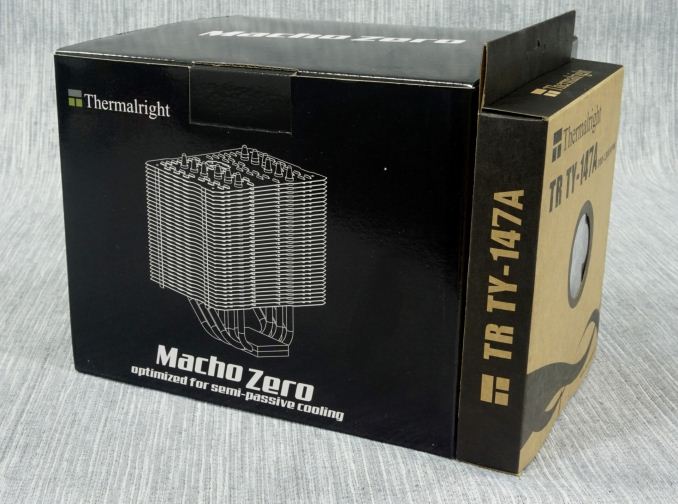
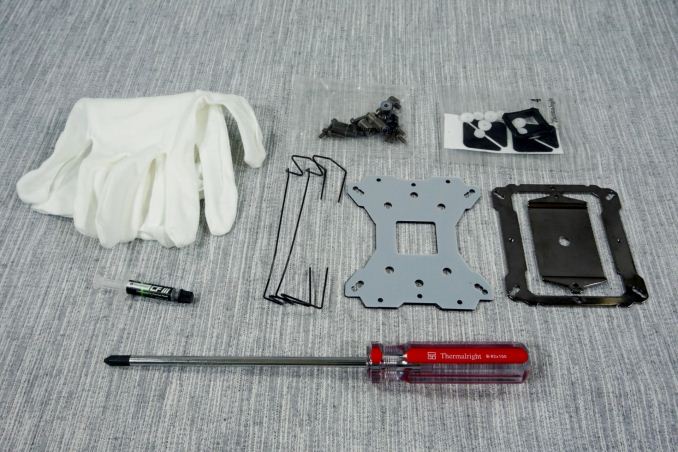
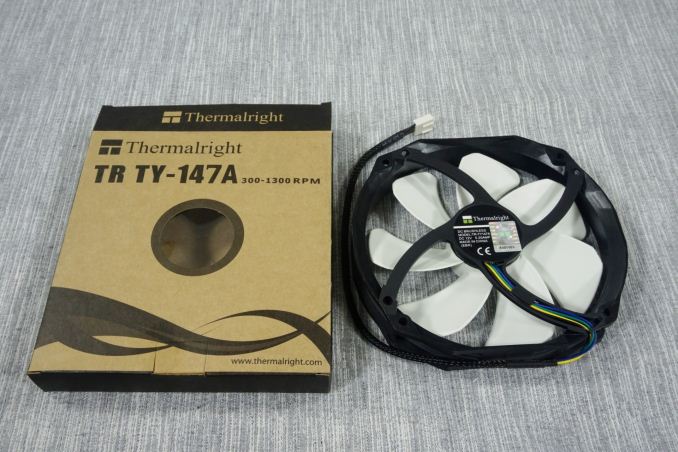
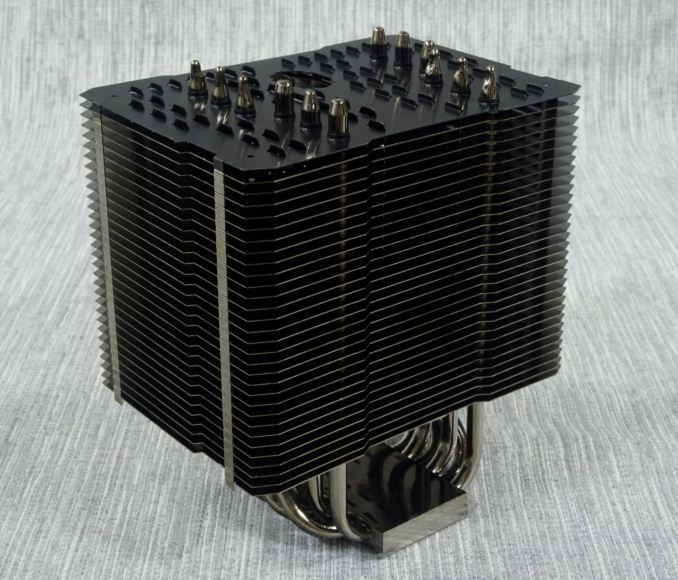
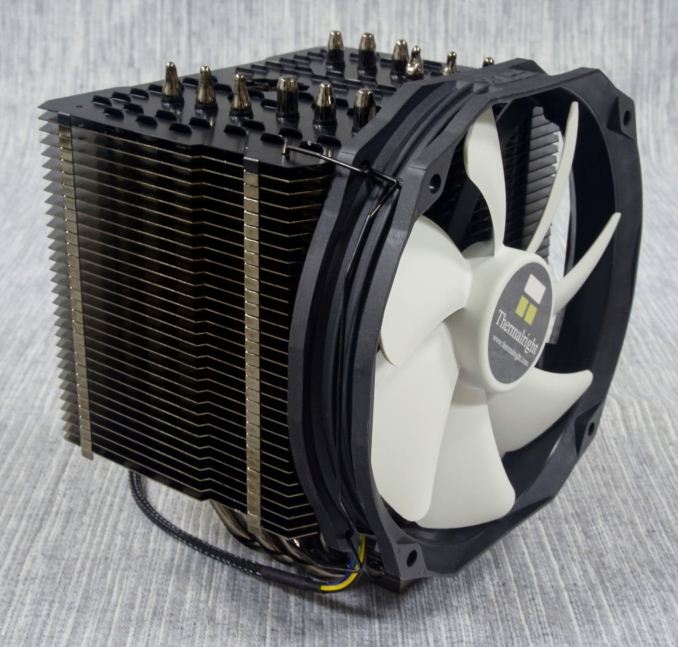
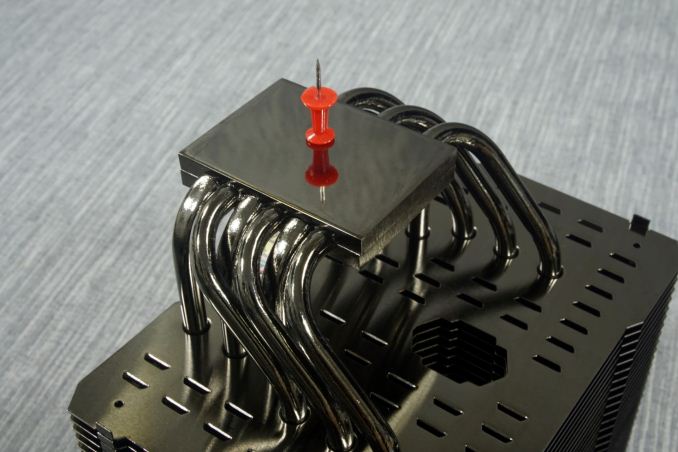








135 Comments
View All Comments
TheJian - Tuesday, July 7, 2015 - link
http://www.anandtech.com/show/6830/cpu-air-cooler-...It is far more impressive than you give it credit for. I easily hit >5ghz on this fan with i4790K.
Shadow7037932 - Tuesday, July 7, 2015 - link
If you're going to extreme OCing, why the hell aren't you on custom water cooling or Dice/LN2?Nfarce - Wednesday, July 8, 2015 - link
Because where I am in overclock, the best air keeps up with the best closed loop kit cooling for far less money.tabascosauz - Monday, July 6, 2015 - link
What farce said is true. At high voltages and overclocks, the 212 EVO breaks down and the dual towers begin to shine.DanNeely - Monday, July 6, 2015 - link
Which with simulated thermal loads ranging from 60-340W should have been made apparent in the course of testing.I would hope and expect that most if not all of these coolers would out perform it, especially at higher loads. But as a de-facto standard budget cooler for people who want something better than Intel's I think it should've been added to the matrix to show how much better these bigger ones performed. A stock Intel cooler should've been included as well for the same purposes (at least at the lower loads; no sense risking burning the test setup by trying to broil 340W through it). Including a mainstream reference point is especially important in this case because E. Fylladitakis's synthetic test load means that we can't cross reference his results with those found elsewhere.
SUpstone - Thursday, October 29, 2015 - link
Totally agree - to get the full picture and to aid comparability with other tests the reference points of the Intel stock cooler (free) and CM 212 EVO (£25) should be included.Flunk - Monday, July 6, 2015 - link
If you buy one of those things on sale I've seen them as low as $30, which if you don't need better cooling, is a good deal. The reason the Hyper 212 EVO is popular is that it's cheaper than most of it's competition and easily available. They're good enough for moderate overclocking on a 1150-series chip so they do fit the bill for a lot of people. Something being popular doesn't make it bad.Pastuch - Monday, July 6, 2015 - link
I have 2 of the original Hyper 212 (Non-evo) on two different I5-2500Ks that have been running super quiet at 4.4ghz for the last 4+ years. No coil whine or bearing degradation on the fans. I paid $20 for each Hyper 212 Evo. The value for the money is amazing. It's an excellent quality reliable product and it's easy to install.I paid $220 for my I5-2500k, 20$ for the Hyper 212 Evo, and $70 for 8gbs of PC 1333 in February of 2011. At 4.4ghz, it's still within 5% as fast as any CPU on the market. Sandy Bridge FOREVER! I'll keep buying video cards. You can waste your money on HSF upgrades for CPUs that become less important every day. DX12 is just going to make the CPU even less useful.
Pastuch - Monday, July 6, 2015 - link
Just to clarify, those are Canadian prices which makes them even more amazing. The new I5-K in Canada is almost $300! No thanks.northward - Monday, July 6, 2015 - link
Remember, the average exchange in 2011 was 1.011 (CAD to USD). It is presently 0.79 (CAD to USD). Assuming US/CAN price parity in 2011, that $220 cooler would cost ~$278, not that far behind the $284 i5 4690K.